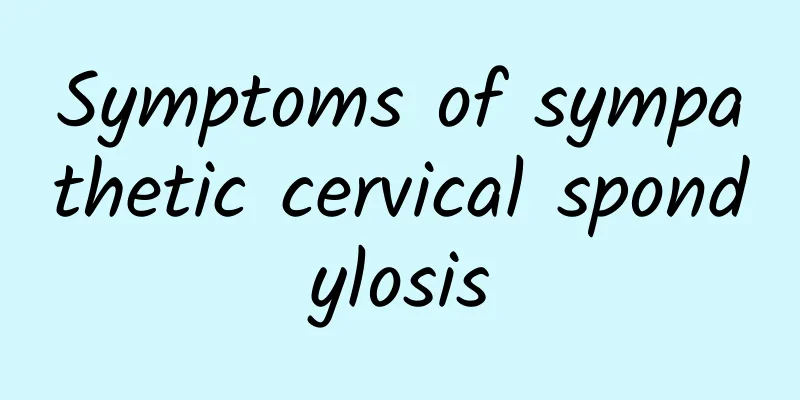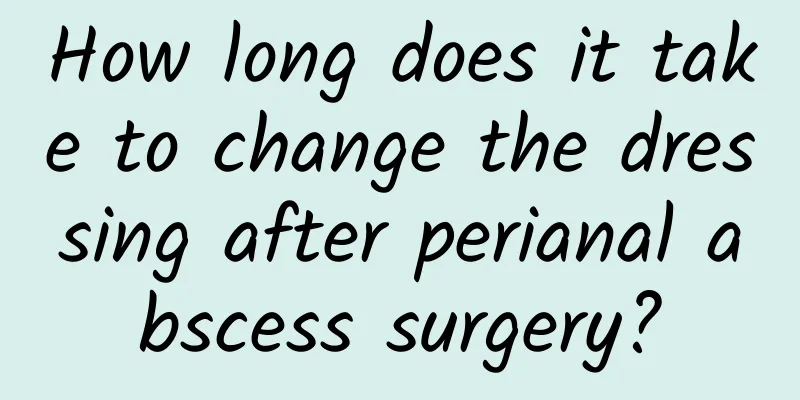Symptoms of sympathetic cervical spondylosis

|
Symptoms of sympathetic cervical spondylosis include headache, stiff neck, dizziness, palpitations, blurred vision, tinnitus, etc., which may also be accompanied by shoulder and back pain and hand numbness. You need to see a doctor as soon as possible. The symptoms vary from person to person, but most of them are caused by the degeneration of the cervical spine structure compressing the sympathetic nerves. Timely diagnosis and treatment can effectively relieve the symptoms. 1 Common symptoms Sympathetic cervical spondylosis is caused by cervical disc degeneration or narrowing of the intervertebral space, which leads to stimulation or compression of the sympathetic nerves. The main manifestations are symptoms related to the head and nerves, such as headache, dizziness, nausea, etc. Patients may feel stiffness or soreness in the neck, which is usually due to excessive tension of the muscles near the cervical spine. Palpitations or chest tightness sometimes occur, which is the result of overactive sympathetic nerve function. For patients with visual and auditory abnormalities, such as blurred vision and tinnitus, it is usually a chain reaction caused by the obstruction of nerve transmission function. 2 Mechanisms behind the pathology The occurrence of this disease is closely related to the overexcitement of the sympathetic nerves, which is affected by factors such as cervical degeneration, external force injury or long-term bad posture. When the nerve roots in the cervical spine are compressed, they will transmit wrong information to the sympathetic nerves, causing them to work unbalancedly. Long-term bad living habits, such as bowing the head for a long time and sitting for a long time, will increase the risk of disease. 3. Medical examination when necessary If you experience the above symptoms, you should seek medical attention as soon as possible. Common diagnostic methods include cervical spine X-rays, MRI and CT scans. These imaging technologies can clearly show whether structural changes in the cervical spine are the main cause of the disease, making it easier to determine the treatment plan. 4 Relief and treatment recommendations Mild sympathetic cervical spondylosis can be improved through non-surgical treatment. Cervical traction therapy and medium-frequency physical therapy can relieve neck pressure and gradually restore normal nerve transmission function. Traditional Chinese medicine therapies such as acupoint massage and acupuncture are also helpful in relieving symptoms and restoring blood circulation. For patients with severe symptoms and impaired function, surgical intervention may be required, such as cervical disc enlargement or anterior decompression. The purpose of surgery is clear, which is to improve the condition by relieving the pressure on the cervical spine. 5 preventive measures you can take in your daily life You can effectively reduce stress by correcting your posture on a daily basis. When working or studying, avoid lowering your head for long periods of time and get up and move your neck every hour. For patients with mild symptoms, proper cervical spine exercises combined with the use of ergonomic pillows can also alleviate symptoms and prevent worsening of the condition. Symptoms of sympathetic cervical spondylosis may have a significant impact on your life. You must pay attention to early discomfort symptoms. Choosing scientific treatment and prevention methods can significantly improve your quality of life. It is also recommended to have a regular health check-up every year, especially for cervical problems. Prevention is better than cure. |
>>: Urinary stones fall into the bladder and cause blood in urine
Recommend
What are the symptoms of abdominal aneurysm and how to diagnose it
What are the symptoms of an abdominal aneurysm? H...
What department should I go to for the symptoms of female back fasciitis
Women with symptoms of back fasciitis need to reg...
Are kidney stones a serious disease?
Kidney stones are not a particularly serious dise...
Why do you have gallstones?
The formation of gallstones is mainly due to the ...
New perspectives on the treatment of cystitis glandularis
The treatment of glandular cystitis can be a comb...
How to care after suffering from gallstones
After confirming the diagnosis of gallstones, pat...
What is the reason for the fetus to be diagnosed with congenital heart disease?
The reasons for the fetal diagnosis of congenital...
Will a breast cyst go away on its own?
Breast cysts don't usually go away on their o...
How long does it take for anal fistula to heal after surgery?
The healing time after surgery for perianal absce...
Is the anus closure serious in newborns?
Neonatal anal closure is a serious congenital pro...
Can I drink honey water if I have breast cyst?
Patients with breast cysts can drink honey water ...
How to treat gallstones in children
Gallstones in children are mainly treated through...
What is acute osteomyelitis? Is it serious?
Acute osteomyelitis is an inflammation of the bon...
Is there any medicine for breast cysts?
Whether breast cysts require medication depends m...
Can I drink fish soup if I have breast cyst?
Patients with breast cysts can usually drink fish...









